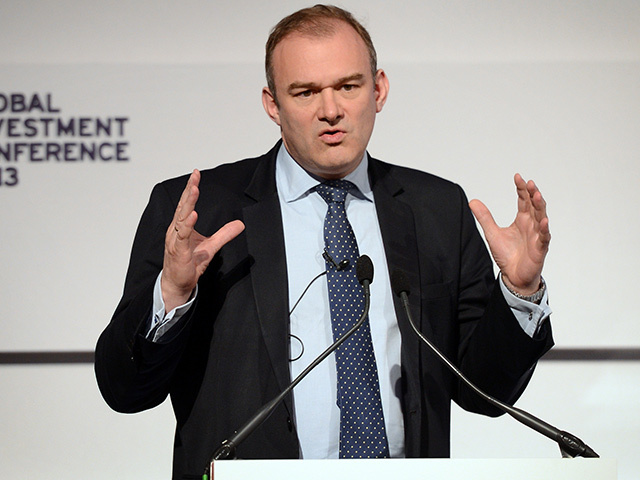
Renewable electricity projects will be able to compete for £300million of financial support, Energy and Climate Change Secretary Ed Davey has announced.
The funding for Contracts for Difference (CFD) scheme is aimed at proving long-term certainty for investors as the UK government looks to reform electricity markets and create a new generation of clean, secure supplies.
It has been estimated that reforms to electricity markets will mean the average annual household electricity bills will be around £41 lower from between now and 2030.
Low-carbon electricity projects will compete at auction for the contracts which will deliver new capacity more cheaply than previous arrangements.
The budget has been boosted by an increase of £95million from the indicative budget, which was published in July.
Funding will support a range of technologies such as onshore wind and solar, which will compete for up to £65million in support.
This will be a reflection of the fact these technologies are already more competitive.
But around £235million will be given to less-established technologies to help them become as competitive as the more established low-carbon generation sources.
The projected spend of the budget remains within the Levy Control Framework, which caps the costs to consumers of government energy policies.
Mr Davey said: “We are transforming the UK’s energy sector, dealing with a legacy of underinvestment to build a new generation of clean, secure power supplies that reduce our reliance on volatile foreign markets.
“Average annual investment in renewables has doubled since 2010 – with a record breaking £8billion-worth in 2013.
“By making projects compete for support, we’re making sure that consumers get the best possible deal as well as a secure and clean power sector.”
The budgets for next year’s auction will be confirmed in 2015, but £50million more has already been indicated for established technologies.
There will also be significant further funding potentially available to new projects, including renewables and carbon capture and storage, by 2020-21.
The government is able to increase the CFD budget because the latest estimates of the overall costs of other policies, in particular the renewables obligation (RO) have been lower than expected.
This will help to ensure there is enough funding available to encourage competition in the auction.
Some money has also been held back to manage the risk of overspending from other policies and for future auctions.
The government has also confirmed that the RO will close to new large-scale solar above five megawatts from April 1, 2015.
There will be a grace period to protect projects with significant financial commitments by May 13, when a consultation on the change began.
The government will also consult on an additional grace period to protect projects on track to commission before April 1, 2015 against the risk of missing the RO closure date due to delays in getting connected to the grid.
After consulting the industry, the eligibility criteria have been amended so that they are better aligned with the practicalities of solar project development processes.
Changes are also being made to the way it supports rooftop-mounted solar power, in line with the solar strategy.
This will include changes to the Feed-in Tariff scheme (FiTs), with a new digression band for solar installations over 50 kilowatts.
It will help to protect existing levels of financial support for this type of rooftop-mounted solar, as well as consulting on changes that would allow businesses and other organisations to take their panels and FiTs with them when they move premises.
The projects that win the auction will receive 15-year contracts, and there will be three pots of money established with the funding.
Earlier this year, the government established its solar strategy – setting out the actions the government is taking in partnership with the industry to ensure that the solar sector continues to grow.
It included a focus on deploying more solar panels on the top of commercial, industrial and public sector buildings.
Later this year, a consultation will take place on allowing businesses to transfer their panels and FITs payments to a new building in a bid to encourage them to invest in solar PV.
Recommended for you
